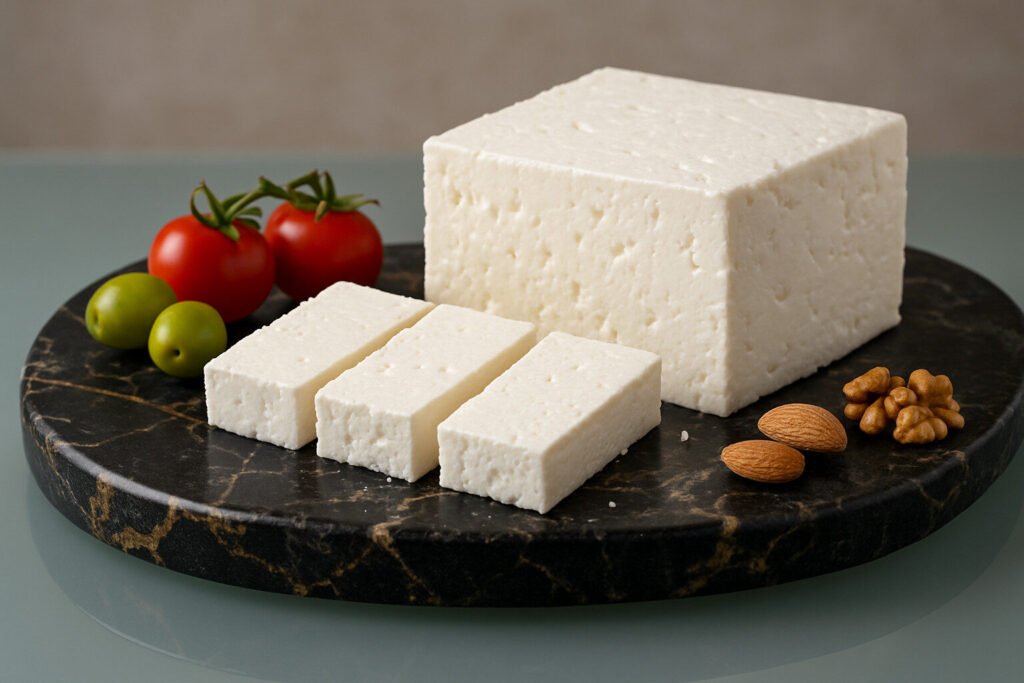White Brined Cheese
Definition and Scope
White brined cheese refers to a category of cheeses preserved and matured in brine solution. These cheeses are typically uncooked, unpressed, and have a high moisture content. They originate from Eastern Mediterranean, Balkan, and Middle Eastern regions. Their characteristic white color comes from the lack of coloring agents and specific milk types used.
The scope includes varieties like Feta, Halloumi, and Beyaz Peynir. These cheeses share common production techniques involving brining at various stages. They are traditionally made from sheep’s, goat’s, or cow’s milk. The brine concentration significantly affects their final texture and shelf life.
Production Process
White brined cheese production begins with milk pasteurization and acidification using starter cultures. Rennet is added to coagulate the milk into curds. The curds are cut, drained, and sometimes lightly pressed. This initial process creates the basic cheese structure before brining.
The cheese is then transferred to brine solutions ranging from 5-18% salinity. Brining occurs at controlled temperatures for several days to months. This salt immersion serves as both preservation method and flavor development stage. The brine concentration determines the final cheese texture and saltiness.
Sensory Profile
White brined cheeses typically exhibit a bright white appearance and moist surface. Their texture ranges from soft and crumbly to semi-hard and sliceable. The brine preservation creates a characteristic salty taste profile. Many varieties have a slight acidity that balances the saltiness.
Flavor notes often include milky, tangy, and sometimes slightly sour characteristics. The aroma is generally clean and mildly lactic. Texture can vary from creamy when young to more firm with extended aging. The high moisture content contributes to their refreshing mouthfeel.
Culinary Applications
White brined cheeses are versatile in cooking due to their salt content and texture stability. They maintain their shape well when grilled or fried, making them ideal for cooking applications. Their salty flavor makes them excellent for salads and vegetable dishes. They are commonly crumbled over fresh preparations.
These cheeses pair well with olive oil, herbs, and fresh vegetables. They are essential components in Greek salad, borek, and various Mediterranean pastries. Their ability to withstand heat makes them suitable for baking and grilling. The saltiness can be balanced with sweet elements like honey or fruit.
Regional Examples
Feta from Greece is the most recognized white brined cheese globally. It must contain at least 70% sheep’s milk according to PDO regulations. Traditional Greek feta has a crumbly texture and tangy flavor. It ages in brine for at least two months before consumption.
Halloumi from Cyprus is notable for its grilling properties due to high melting point. Bulgarian Sirene is another prominent example with a slightly grainier texture. Turkish Beyaz Peynir is typically less salty than other varieties. Each regional version reflects local milk sources and traditional brining practices.

